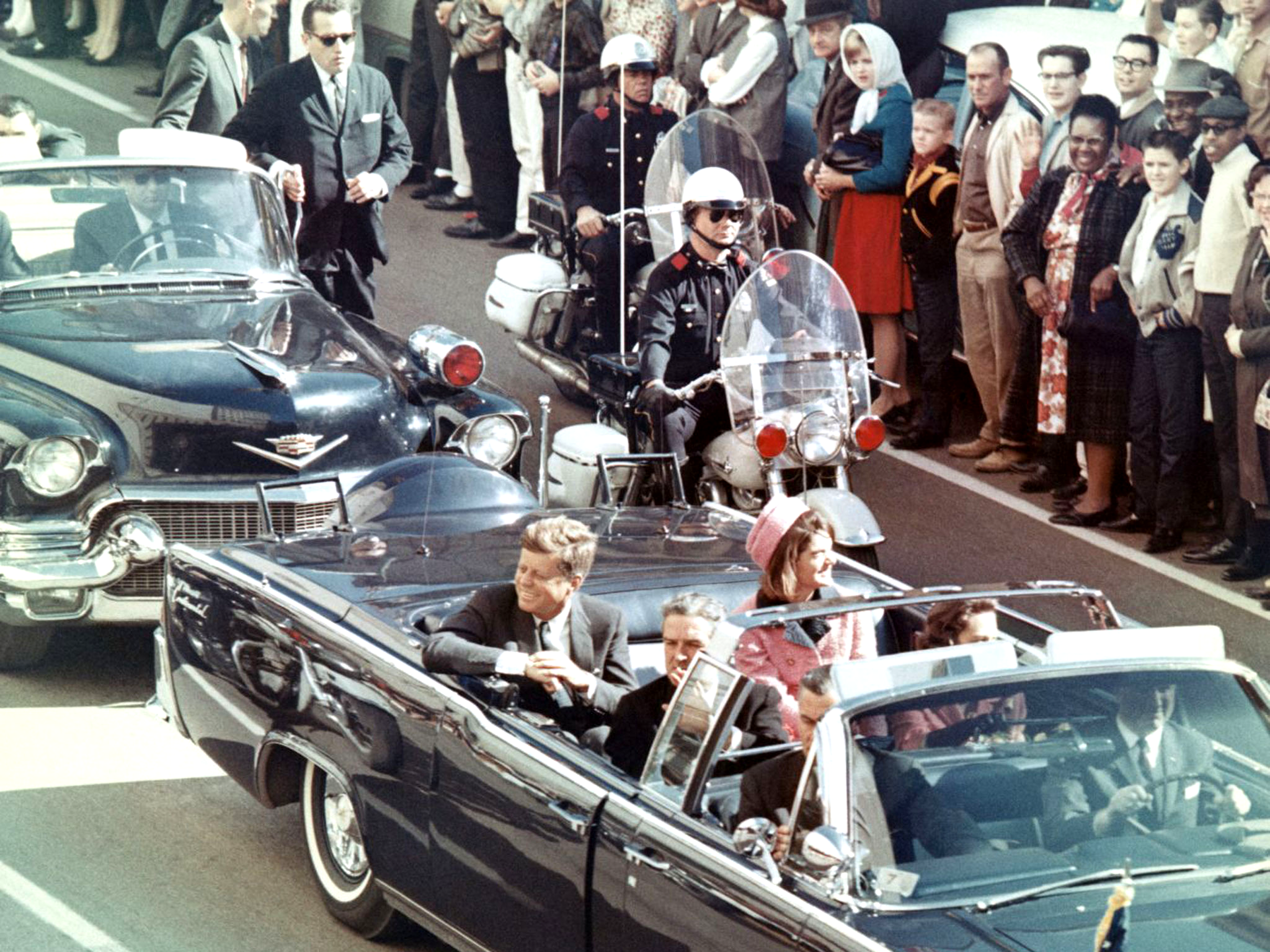
Assassination of John F. Kennedy
On November 22, 1963, John F. Kennedy, the 35th president of the United States, was assassinated while riding in a presidential motorcade through Dealey Plaza in Dallas, Texas. Kennedy was in the vehicle with his wife, Jacqueline, Texas Governor John Connally, and Connally's wife, Nellie, when he was fatally shot from the nearby Texas School Book Depository by former U.S. Marine Lee Harvey Oswald. The motorcade rushed to Parkland Memorial Hospital, where Kennedy was pronounced dead about 30 minutes after the shooting; Connally was also wounded in the attack but recovered. Vice President Lyndon B. Johnson was hastily sworn in as president two hours and eight minutes later aboard Air Force One at Dallas Love Field.
"Kennedy assassination" redirects here. For the assassination of John's brother Robert, see Assassination of Robert F. Kennedy.Assassination of John F. Kennedy
Dealey Plaza in Dallas, Texas, U.S.
November 22, 1963
12:30 p.m. (CST)
- 6.5×52mm Italian Carcano M91/38 rifle (Kennedy)
- .38 cal Smith & Wesson revolver (Tippit)
- John F. Kennedy
- J. D. Tippit
After the assassination, Oswald returned home to retrieve a pistol; he shot and killed lone Dallas policeman J. D. Tippit shortly afterwards. Around 70 minutes after Kennedy and Connally were shot, Oswald was apprehended by the Dallas Police Department and charged under Texas state law with the murders of Kennedy and Tippit. At 11:21 a.m. on November 24, 1963, as live television cameras covered Oswald's being moved through the basement of Dallas Police Headquarters, he was fatally shot by Dallas nightclub operator Jack Ruby. Like Kennedy, Oswald was taken to Parkland Memorial Hospital, where he soon died. Ruby was convicted of Oswald's murder, though the decision was overturned on appeal, and Ruby died in prison in 1967 while awaiting a new trial.
After a 10-month investigation, the Warren Commission concluded that Oswald assassinated Kennedy, and that there was no evidence that either Oswald or Ruby was part of a conspiracy. In 1967, New Orleans District Attorney Jim Garrison brought the only trial for Kennedy's murder, against businessman Clay Shaw; Shaw was acquitted. Subsequent federal investigations—such as the Rockefeller Commission and Church Committee—agreed with the Warren Commission's general findings. In its 1979 report, the United States House Select Committee on Assassinations (HSCA) concluded that Kennedy was likely "assassinated as a result of a conspiracy". The HSCA did not identify possible conspirators, but concluded that there was "a high probability that two gunmen fired at [the] President". The HSCA's conclusions were largely based on a police Dictabelt recording later debunked by the U.S. Justice Department.
Kennedy's assassination is still the subject of widespread debate and has spawned many conspiracy theories and alternative scenarios; polls found that a majority of Americans believed there was a conspiracy. The assassination left a profound impact and was the first of four major assassinations during the 1960s in the United States, coming two years before the assassination of Malcolm X in 1965, and five years before the assassinations of Martin Luther King Jr. and Kennedy's brother Robert in 1968. Kennedy was the fourth U.S. president to be assassinated and is the most recent to have died in office.